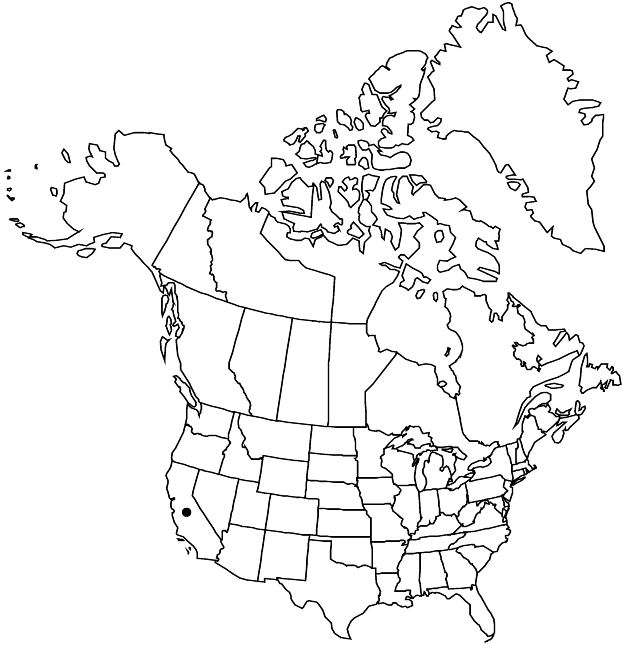Horkelia tularensis
Suppl. Calif. Fl., 110. 1968.
Plants 1–4 dm diam. Stems decumbent to erect, 0.3–1.8 (–2.5) dm. Basal leaves 2–8 (–10) × 0.5–1.3 cm; leaflets 4–6 (–10) per side, overlapping, cuneate to flabellate, 3–8 mm, divided 3/4+ to midrib into (3–) 5–8 oblong to obovate or oblanceolate lobes, villous to pilose at least marginally or apically. Cauline leaves 1 or 2. Pedicels 2–7 mm. Flowers 3–15, 8–10 mm diam.; epicalyx bractlets linear-lanceolate, 1–2.5 (–3) × 0.3–0.5 (–0.8) mm, ± 2/3 length of sepals; hypanthium 1–1.5 × 2.5–4.5 mm, nearly 1/2 as deep as wide, interior sparsely pilose; sepals spreading to reflexed, broadly lanceolate, (2–) 3–4.5 (–5) mm, hairs stiff, 0.5–1 mm; petals not pink-tinged, narrowly oblanceolate to narrowly oblong, 2–4 mm, apex rounded to truncate, often slightly mucronate; filaments white, 1–2 × 0.3–0.5 mm, usually glabrous, rarely sparsely pilose, anthers 0.6–0.8 mm; carpels 5–12; styles 1.5–2 mm. Achenes light-brown to brown, 2–2.5 mm.
Phenology: Flowering summer.
Habitat: Dry, rocky metamorphic ridges, in subalpine conifer woodlands
Elevation: 2300–2900 m
Discussion
Of conservation concern.
Horkelia tularensis is known only from the Kern Plateau in Tulare County. Greenish and reddish plants can grow intermixed in a single population.
Selected References
None.
Lower Taxa
"thin" is not a number.No values specified."dm" is not declared as a valid unit of measurement for this property."dm" is not declared as a valid unit of measurement for this property."dm" is not declared as a valid unit of measurement for this property."dm" is not declared as a valid unit of measurement for this property.
